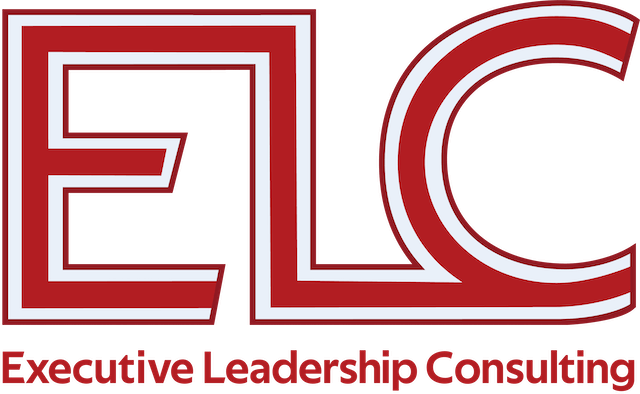Effective executive communication is like a two-way street: it allows leaders to share their vision and values with employees, while also giving them the chance to provide feedback and insight. With an effective executive communications strategy in place, organizations can ensure that everyone is aligned and working towards a shared vision.
It’s like building a strong bridge between leadership and team – one that encourages collaboration, trust, and understanding.
Developing a comprehensive plan that takes into account all aspects of executive communication can help ensure your organization runs smoothly and efficiently while also helping to increase sales, customer loyalty, employee satisfaction, and overall performance.
Exploring the Link Between Casino Advertisements and New Zealand’s Media Landscape
As the popularity of online gambling continues to rise, so does the presence of casino advertisements in New Zealand’s media landscape. These advertisements can be found on television, radio, print media, and most prominently, on the internet. In this article, we will delve into the link between casino advertisements and New Zealand’s media landscape, examining the impact of such advertisements and the regulations surrounding them.
The Rise of Online Casinos in New Zealand
Online casinos have gained significant traction in recent years, offering a convenient and accessible platform for New Zealanders to engage in gambling activities. With the advent of advanced technology and the widespread use of smartphones and tablets, online casinos have become increasingly popular among both seasoned gamblers and newcomers to the gambling scene.
One of the key factors contributing to the rise of online casinos is the extensive advertising campaigns carried out by various gambling operators. These operators utilize various media platforms to promote their services, targeting potential customers and enticing them to try their luck at the virtual casino tables.
bestonlinecasinosnz.net is one such platform that offers comprehensive information about the best online casinos available to New Zealand players. It provides detailed reviews, comparisons, and guides to help individuals make informed decisions about which online casino to choose. With a focus on responsible gambling, bestonlinecasinosnz.net aims to provide a safe and enjoyable experience for players.
The Impact of Casino Advertisements
The proliferation of casino advertisements has undoubtedly had a significant impact on New Zealand’s media landscape. While some argue that these advertisements promote gambling addiction and exploit vulnerable individuals, others contend that they contribute to the country’s economy and offer entertainment value to those who choose to engage in gambling activities.
Proponents of casino advertisements argue that they generate revenue for the media industry, which in turn supports journalism and other forms of content creation. Furthermore, they argue that the responsibility lies with individuals to make informed decisions about their gambling habits and that advertisements merely provide options for entertainment.
However, critics argue that casino advertisements can have a detrimental effect on society, particularly on those who are prone to developing gambling addictions. They argue that the constant exposure to these advertisements creates a normalized perception of gambling and can lead to financial and emotional consequences for individuals and their families.
Regulations Surrounding Casino Advertisements
In response to concerns about the impact of casino advertisements, New Zealand has implemented regulations to govern their content and distribution. The Gambling Act 2003 and the Advertising Standards Authority (ASA) provide guidelines and restrictions to ensure responsible advertising practices.
Under these regulations, casino advertisements must not target or appeal to minors, promote excessive gambling, or mislead consumers about the odds of winning. Advertisements must also include information about problem gambling helplines and promote responsible gambling practices.
While these regulations aim to strike a balance between allowing gambling operators to advertise their services and protecting vulnerable individuals, the effectiveness of these measures is still a topic of debate. Some argue that stricter regulations are needed to further limit the influence of casino advertisements, while others believe that individual responsibility is key.
In conclusion, the link between casino advertisements and New Zealand’s media landscape is undeniable. The rise of online casinos has led to an increase in advertising campaigns, with operators utilizing various media platforms to reach potential customers. The impact of these advertisements is a subject of ongoing debate, with arguments for both their economic benefits and potential harm. With regulations in place, New Zealand aims to strike a balance between allowing advertising and protecting vulnerable individuals. Ultimately, the responsibility lies with individuals to make informed decisions about their gambling habits and seek help if needed.
In this article, we will explore how to create an effective executive communications strategy that builds your business.
The Difference Between Executive Communications And Internal Communications
Executive communications and internal communications serve two very different, yet equally important roles.
Executive communications are typically used to inform employees of the company’s vision and goals, as well as to give them direction on how to reach those objectives. Internal communications, on the other hand, is a form of communication that focuses more on employee engagement – encouraging collaboration and participation, building trust, and providing feedback.
Overall, executive communications differs from traditional internal communications in that it focuses on strategic goals rather than operational updates or employee engagement initiatives.
As such, an effective executive communication strategy must be tailored to the specific needs of the business.
Why Should You Have An Executive Communications Strategy?
Having an effective executive communications strategy is essential for any business. It helps to ensure that key messages are communicated effectively and efficiently between the executive team and other team members, which in turn can help create a strong sense of unity and alignment within the organization.
Furthermore, with the help of specialized surveys, it can help highlight any passion deficits, resulting in emotional disconnect between the executive team and the staff.
Despite many organizations focusing on resonating with their internal team, external stakeholders also play a critical role in the success of the organization.
Developing an effective executive communications strategy in place is also beneficial for improving customer experiences. By clearly communicating your company’s vision and values to customers or clients, your leadership team will be able to create a better understanding of what your business stands for and how it can serve their needs.
How To Create An Executive Communications Strategy That Builds Your Business
Once you have decided to create an executive communications strategy, there are several steps you can take to ensure it is successful.
Develop Executive Communication Skills
The first step in creating a successful executive communication strategy is to develop the necessary skills.
This includes knowing how to:
- listen effectively
- show empathy
- use the right communication style
- provide clarity and transparency
- understand the company’s vision and objectives
- effectively articulate those vision to staff, and
- provide meaningful feedback.
By having the right skills in place, the leadership team will be better equipped to communicate more effectively with employees and customers.
Create Employee Personas
Employee personas are representations of the types of people who work in your organization. They are created to help you better understand their needs and interests, as well as what they value most in an employer. By creating employee personas, you will be able to ensure that all messages sent out align with their expectations and preferences.
For example, if you know that your employees are mostly young professionals, you may want to communicate in a more casual and conversational tone of voice. On the other hand, if they are older professionals, using a more formal and direct tone may be better suited for communicating with them.
Set Goals And A Timeline
Creating an executive communications strategy without clearly defined goals and timelines is like building a house without a blueprint – it will be difficult to measure progress and hold people accountable.
Therefore, take the time to develop well-defined objectives that are aligned with the company’s overall vision and values.
In addition, setting a timeline for each goal is just as important as creating them. This will help ensure that everyone is on the same page and working toward meeting the goal.
Show Employees That Leaders Are Listening
55% of CEOs believe that lack of trust is a threat to scaling their organization.
Therefore, it’s important for executives to establish a trust-based culture and to show their team members that they are listening and taking their opinions into account.
This can be done by asking questions, responding promptly to inquiries, engaging with employee feedback gathered via surveys, and inviting their input into important decision-making processes.
By doing so, employees will feel more valued and respected, which can lead to improved morale, engagement and trust. Furthermore, involving them in the decision-making process also shows that their opinions are important, which is often a powerful trust-factor for employees.
What Is An Executive Communication Plan?
An executive communication plan outlines the strategy of how to communicate with key stakeholders, including customers, employees, and other business partners. It should include a detailed description of the message that is to be communicated, who it will be sent to, and when it will be sent out.
The plan should also include information on how communication will be tracked and evaluated in order to measure its effectiveness. Finally, the plan should include a timeline of when each step of the process will be completed.
How Do You Write An Executive Communications Plan?
Creating an effective executive communication strategy requires a well-thought-out plan.
1. Define Your Personal, Team and Organization WHY
Your personal WHY is your passion, your mission and your purpose. Establishing this is essential for inspiring others, setting direction, developing a shared vision and ultimately creating an environment where people are more likely to be engaged and connected with their work.
Once you have unlocked your personal WHY, this dedication and fervor will spread to your team’s WHY and eventually your organization’s WHY. This will help all members of your executive team understand the ultimate vision and values that you are looking to accomplish.
2. Outline The Goals and Timeline
Once you have established the WHYs of your team and organization, it is important to set out clear and measurable goals. This will help you stay on track, measure progress, and establish a timeline for when the objectives should be completed.
SIMPLE, CLEAR, CONCISE, CONNECTED, & FREQUENT
If you have these five qualities in your communication, you will get your message across. As an executive leader, it is your responsibility to provide the ongoing information and feedback to maintain a singular and strong voice in your organization.
To maximize your ability to improve alignment with your organization through good communication, let’s discuss these a little more.
- Simple: One of the biggest detriments to communication is attempting to demonstrate your intelligence and vocabulary. For leaders, it’s critical that you communicate simply.
- Clear: You must have a message that is understandable to your audience. Remember: memorable is doable. When it’s clear and simple, people remember it. They repeat it to others. And they will be more likely to take action and do it.
- Concise: Don’t waste time beating around the bush. Get to your point before you lose your audience.
- Connected: Think about what inspires and motivates you. Give examples and tell stories to connect with them and make your message more memorable.
- Frequent: Most important, communicate frequently. People don’t usually get it the first time or the first way. Research shows that spaced repetition is key to learning and retaining information.
Not everyone absorbs information the same way. Some people remember if they read it, others if they hear it, some if they visualize it, and others if they have some experience of it.
When you have the five qualities, they’ll get it, and more important, they’ll do it.
EXECUTIVE LEADERSHIP ACTION PLAN:
How can you communicate more clearly?
What can you do to communicate your key messages more often?
“If a leader can’t get a message across clearly
and motivate others to act on it,
then having a message doesn’t even matter.”
~ Gilbert Amelio
9 Executive Communications Planning Tips
Utilize these 9 tips to create an effective executive communications plan:
1. Effective Executive Communication Builds Trust
Take the time to build relationships with your key stakeholders and demonstrate that you are reliable and trustworthy. Successful communication starts with trust – and trust starts with you.
2. Make Content Easy
Keep your messages simple and concise to ensure that they are understandable and memorable. Use visuals or other tools to supplement your message, if necessary.
3. Map Responsibilities And Build Approval Processes
Outline who is responsible for each step of the process, as well as any approval processes that must be followed. Doing this will ensure efficient and timely communication.
4. Effective Executive Communication Is Crucial For Building A Brand Image
Your ability to communicate effectively is key to establishing a positive brand image in the eyes of stakeholders, customers, and employees alike.
5. Know Your Audience
Customize your message for your target audience. Think about what they need to know and how it is best communicated to them. Ultimately, the plan should be tailored to your specific audience and objectives.
6. Provide Executive Communication Training
Train yourself, as well as your executive team, on how to communicate effectively with stakeholders. Make sure everyone knows the expected tone and content of the message.
7. Active Listening
Effective communication isn’t only about what you have to say, but also about how well you listen. Take time to understand the perspective of others, as this can inform your decision-making process.
8. Think About How Your Brand Fits The Context
Understand the context of your message and think about how it fits into the overall brand image. Use visuals or other tools to help communicate this.
9. Use Appropriate Communication Channels
Choose the most appropriate communication channels for both delivering and receiving messages. Different stakeholders may respond differently to different channels, so select carefully.
Establish Your Executive Communication Strategy With The Help of Experts
By following these executive communication planning tips, you can ensure that your messages are clear and effective, and that they will be heard by the people who need to hear them. Developing a successful executive communications plan is key to building trust and establishing a positive brand image for your organization.
At Executive Leadership Consulting, our Red Thread Leadership model helps you align your communication strategy with a trust-based culture. Contact us today for more information on how we can help you create an effective communications plan.
Unabhängig davon, viele Pluses Cialis Medikamente können Männern zur Verfügung stellen, es hat auch einige Minusel, und Sie können lesen Bewertung. Unter Minusen, die durch die Verwendung der medizinischen Zubereitung verursacht werden können, sind Muskelschmerzen, Kopfschmerzen, Verdauung






